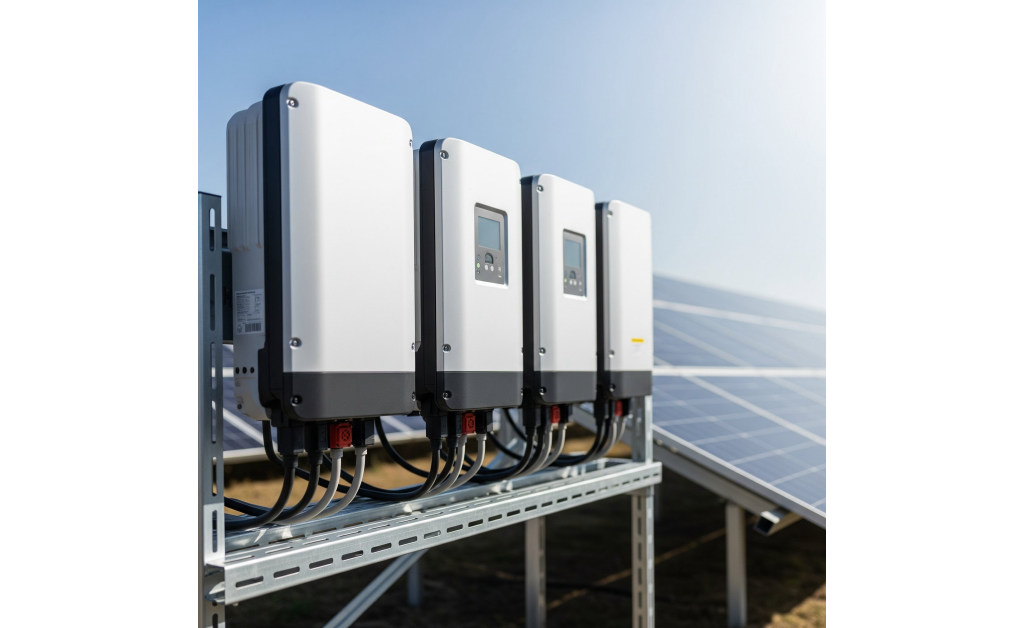Core Components: Best Practices for Solar Cables & Connectors
As the world continues to shift towards renewable energy, solar power remains at the forefront as one of the most sustainable and practicable sources of energy. One of the most important components of any effective solar photovoltaic (PV) system is wiring and connection. The performance, safety, and lifespan of a solar PV system heavily rely on the quality of solar cables and connectors. Well-designed and properly installed solar cables and connectors help in efficient power transmission, loss reduction, as well as safety minimization against overheating, electrical faults, or even risks of fire.

Knowledge of solar cable standards, the function of solar PV connectors, why MC4 connectors are important, why the choice of solar panel wire gauge matters, and the need for solar panel extension cables is important in designing and maintaining a solar power system. In this guide, we will explore the best practices for choosing and installing solar connectors and cables and complying with industry standards to increase the efficiency of your solar energy system.
Importance of Solar Cables and Connectors
The function of solar cables and connectors is more than just electrical transmission. These are the lifelines of a solar PV system, which ensure that the electricity produced trickles smoothly from solar panels to the inverter and finally to the power grid or storage unit. Incorrectly selected or incorrectly installed cables and connectors result in energy loss, recurrent maintenance problems, and safety risks.
Solar Cable Standards: Ensuring Safety and Efficiency
Strict adherence to solar cable standards is a requirement for system reliability and safety. Solar cables must conform to international and regional standards, which include:
- IEC 62930: The standard gives requirements for PV system low-voltage DC cables that would make them operate under environmental stresses.
- UL 4703: It is used for North American PV wire and emphasizes UV resistance, insulation thickness, and flame retardance.
- TÜV 2 PFG 1169/08.2007: A European standard ensuring the high temperature and mechanical stress resistance of the cable.
Using cables that have these specifications guarantees their longevity, optimal performance, and stability against degradation due to environmental factors like UV light, water, and excessive temperatures.
Understanding Solar PV Connectors
Solar PV connectors are the backbone of honesty in an electrical circuit of a solar PV system. Solar PV connectors are tasked with delivering stable and safe connections from solar panels to other units of a solar PV system. The MC4 connector is the standard connector in the industry.
MC4 connectors are preferred due to their:
- Weather Resistance: Built to withstand extreme weather.
- Secure Locking Mechanism: Prevents accidental disconnection.
- Efficient transmission of electricity: Minimizes energy losses.
- Compatibility: Tuned to fit ideally on the majority of solar panels.
Selecting the Right Solar Panel Wire Gauge
Choosing the correct solar panel wire gauge is critical for reducing power loss and ensuring system efficiency. When choosing the gauge of wire, the following factors are the important ones to take into consideration:
- Current carrying Capacity: Using a wire with a small gauge number, allows higher current flow without damage or it may carry higher current drawing power.
- Voltage Drop: Limitation of too much voltage drop in a system: too much of this may compromise the efficiency of the system but choosing the correct gauge can overcome this loss.
- System Voltage and Distance: The higher the voltage system it permits the use of thinner wire over longer distances at reduced material cost.
Commonly used wire gauges for solar applications include:
- 10 AWG: Ideal for smaller residential installations.
- 8 AWG: Suitable for medium-sized systems with moderate distances.
- 6 AWG: Used for larger systems requiring minimal voltage drop.
Importance of Solar Panel Extension Cables
Solar panel extension cables are essential for accommodating various solar system layouts and distances between panels and inverters. When selecting extension cables, ensure they:
- Match the System’s Wire Gauge Requirements
- Use UV-Resistant, Weatherproof Materials
- Maintain Secure MC4 Connector Compatibility
Conclusion
Optimizing your solar PV system’s performance begins with selecting high-quality solar cables and connectors that meet solar cable standards and best practices. Understanding the functionality of solar PV connectors, choosing the correct MC4 connector, selecting the appropriate solar panel wire gauge, and using durable solar panel extension cables are critical steps in ensuring long-term efficiency and safety. By adhering to these best practices, solar energy users can maximize power output, extend system lifespan, and achieve greater sustainability in their energy solutions.
Frequently Asked Questions (FAQs)
The most important solar cable standards include IEC 62930, UL 4703, and TÜV 2 PFG 1169/08.2007. These ensure durability, safety, and resistance to environmental factors.
MC4 connectors are preferred because they provide a weather-resistant, secure locking mechanism, efficient current transmission, and seamless compatibility with most solar panels.
The wire gauge depends on the current carrying capacity, voltage drop considerations, system voltage, and distance between components. A lower gauge number (thicker wire) is better for reducing power loss over long distances.
No, standard electrical cables are not designed for the harsh environmental conditions solar cables endure. Solar cables are UV-resistant, flexible, and built to handle extreme temperatures.
Solar panel extension cables allow flexibility in panel placement and system expansion while maintaining efficiency and safety. They must match the required wire gauge and feature UV-resistant materials.












